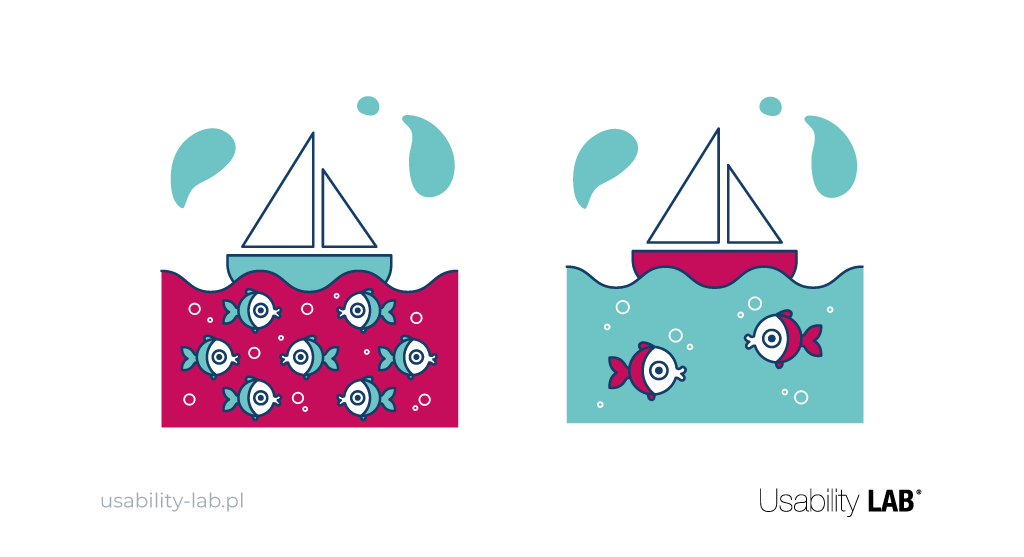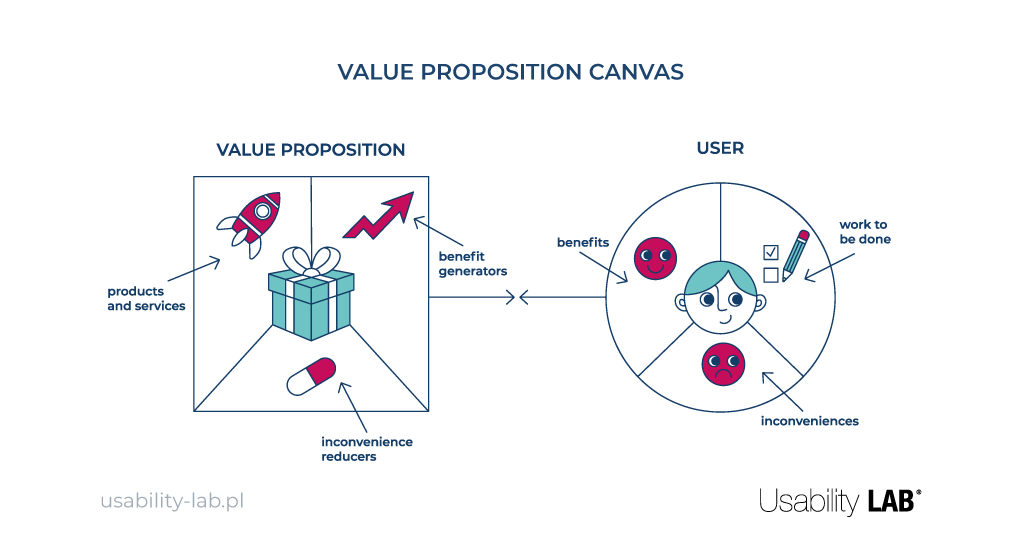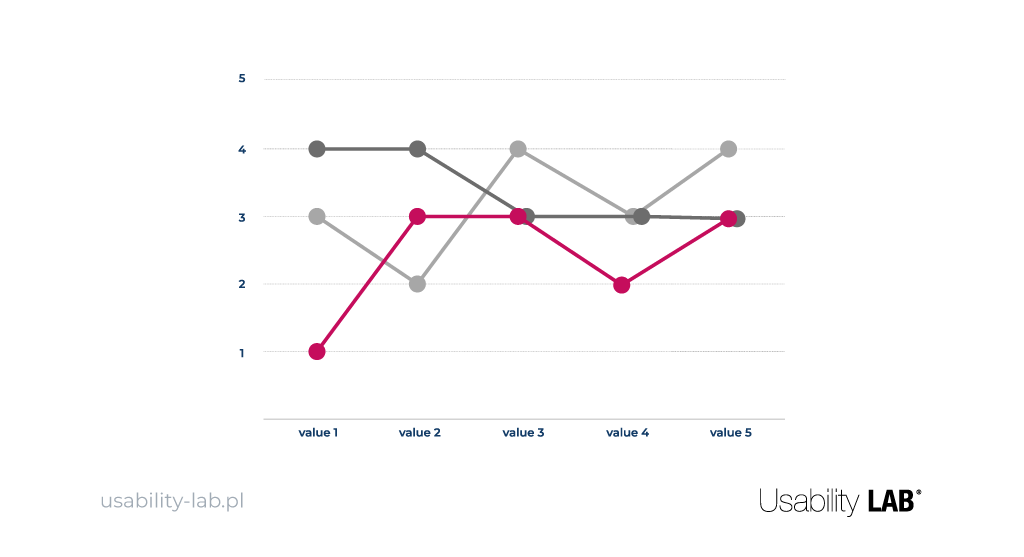Product teams, designers and customers are all becoming increasingly aware of one fact: a good product or service needs to offer more than just alignment with needs of users and businesses or using the capabilities of technology. More and more often, especially after analysing our competition, we find ourselves arriving at the same conclusion: things are not that simple. We need strategic approach to redesigning or creating new services and products.
To quote Michael Porter from Harvard Business Review: “Strategy is doing different things from what the competitors are doing or doing the same things differently.”.
How do you pick those things? What can you do differently? Where do you begin?
You need to consider value proposition and its related mindset.
Value proposition
A “value proposition” is simply the reason why a consumer chooses one particular brand from all brands offering the same product or service.
In other words, it is a promise of certain value. The word “promise” is key here. According to Stephen Vargo and Robert Lusch (2008), an organisation does not deliver value. Value is a subjective feeling of an end user. The consumer, recipient of a service or product, decides whether something has value to me.
Vargo and Lusch emphasise the organisation-consumer relationship and point out that in such relationships, the consumers are not only recipients, but also co-creators of value. What does that mean?
Take Instagram — if it had zero users, would it have any value? What if it had just one inactive user? Would that make it valuable?
Instagram offered the following value (from their AppStore description):
Bringing you closer to the people and things you love.
Connect with friends, share what you’re up to, or see what’s new from others all over the world. Explore our community where you can feel free to be yourself and share everything from your daily moments to life’s highlights.
Express Yourself […]
This value proposition resonated with people who valued staying close with their friends or expressing themselves through pictures.
The next step was user engagement through posting photos and commenting on the pictures of others. This way, an organisation-consumer relationship was created and the app’s value was built.
When do you need a value proposition?
You always need it for each and every service or product—if you want to stand out in the market.
Let’s take a moment to think what would happen if your product had no defined value proposition.
You could end up with a product or service that’s very similar to another thing already available on the market. This in turn could result in low margins, scrounging to save money at every step, and fiercely battling the competition. We call that market situation a “red ocean.”

Your opportunity to create long-term competitive advantage lies in creating “blue oceans”—competition-free market space. To achieve that, you will often need to create a new product or service category.
How to create a value proposition and design a product that will stand out in the market?
The first step is to understand needs and problems of end users. Some of you are probably familiar with Value Proposition Canvas — the tool in which you start with needs, pain points, and jobs to be done by the user:

Your starting point is research among users to gain insights. Research should provide us with information on values important to users, as well as the assessment of our service in terms of these values. With that, we can map ourselves and our competition, and start making strategic decisions regarding value proposition.

The role of value proposition in designing products and services
With value proposition prepared, as UX/service design specialists we can cooperate with development and business teams to go further—by precisely identifying features and functionalities of our product. We know what needs and pains the new product or a new version of an existing product should address, and what value we can provide. At this stage, we organise workshops with an interdisciplinary team comprised of both client’s and our representatives.
Functional requirements identified with the use of a value proposition can be transformed into mock-ups or prototypes of solutions for user testing. Thanks to that, we can test the value proposition (whether users want our product), and we can check if the product is useful and intuitive (can users operate it).
To those looking for more information about testing value proposition and business models, I wish to recommend the latest book published by Strategyzer – Testing Business Ideas (Alexander Osterwalder, David J. Bland, Alan Smith).

